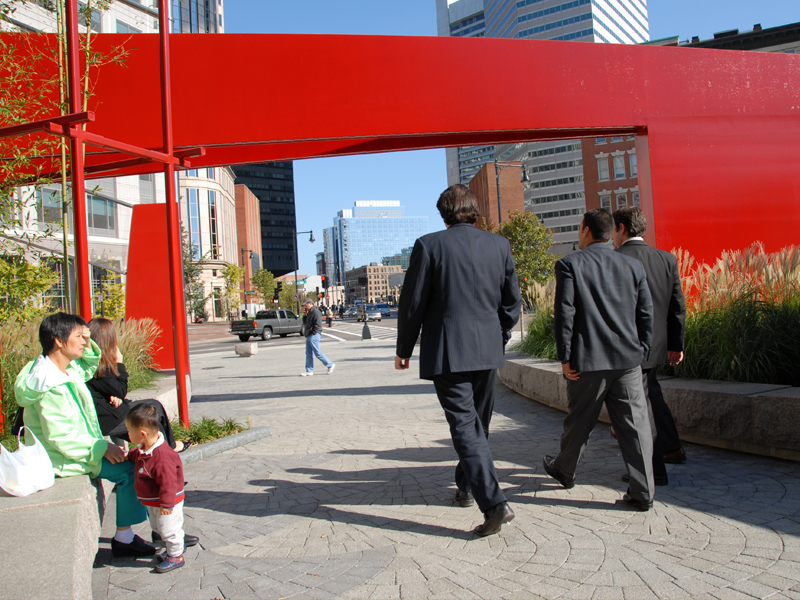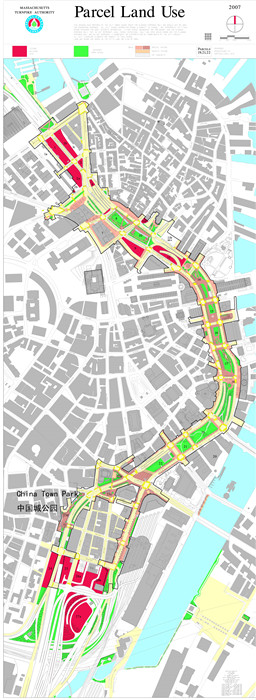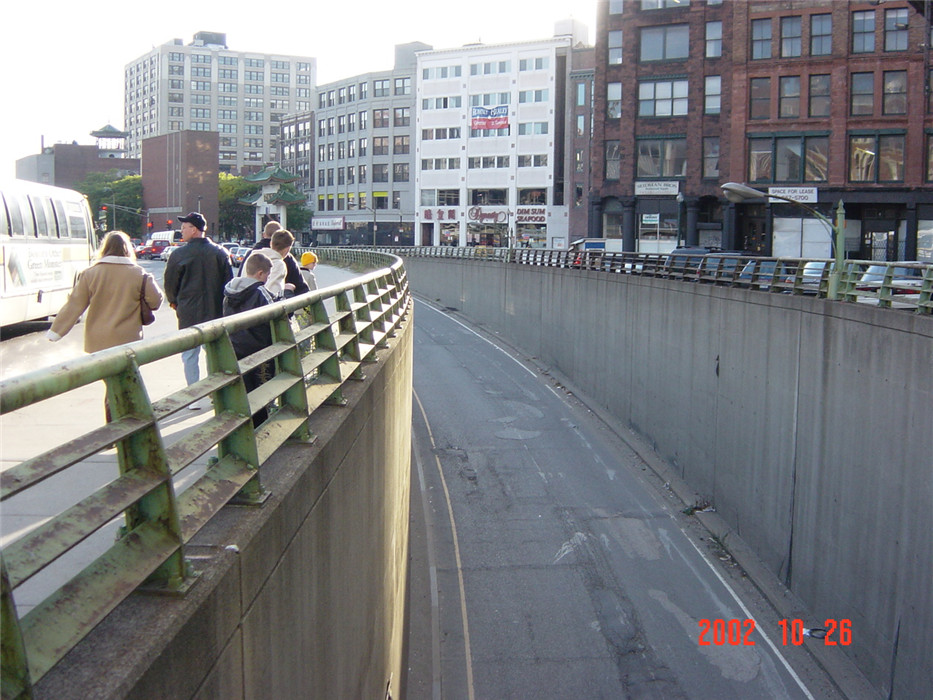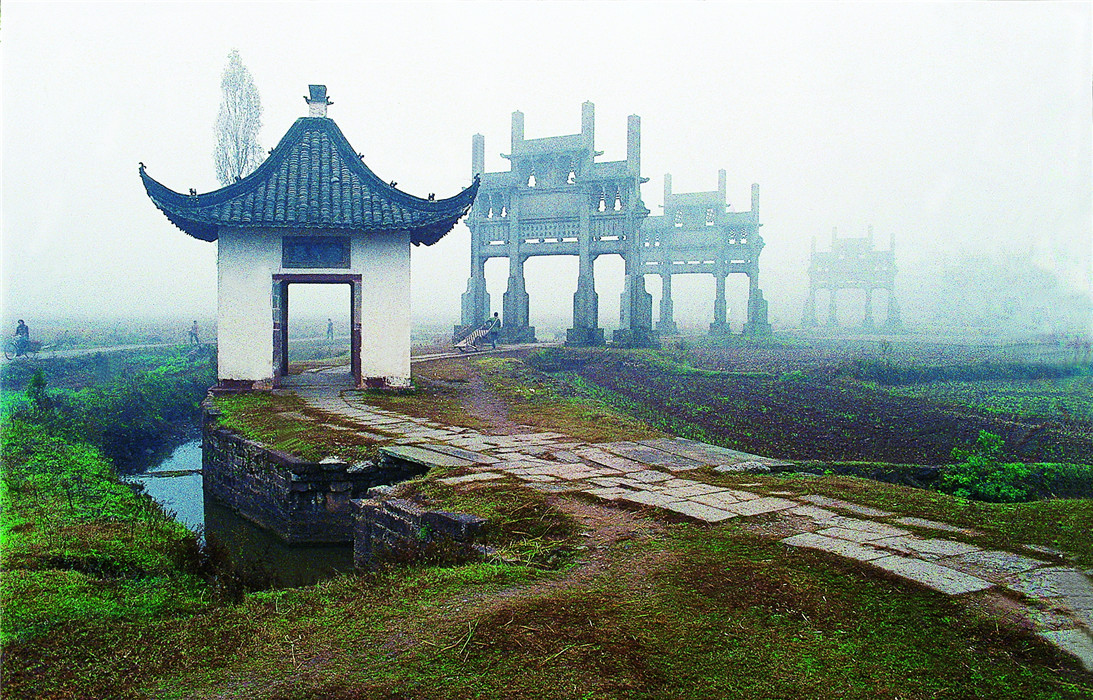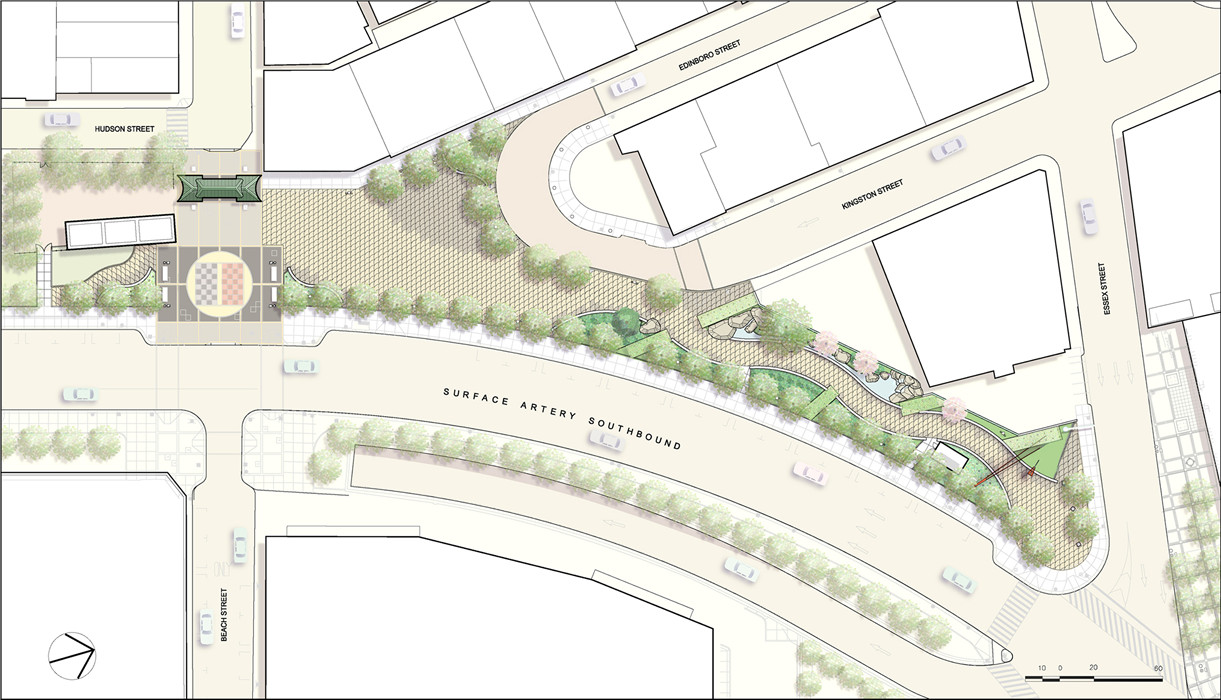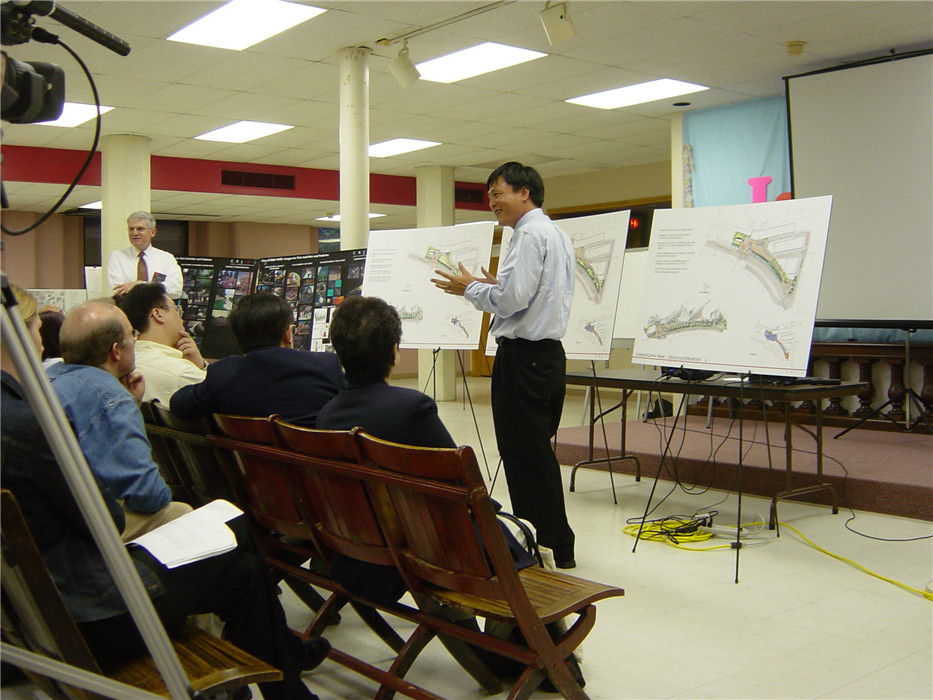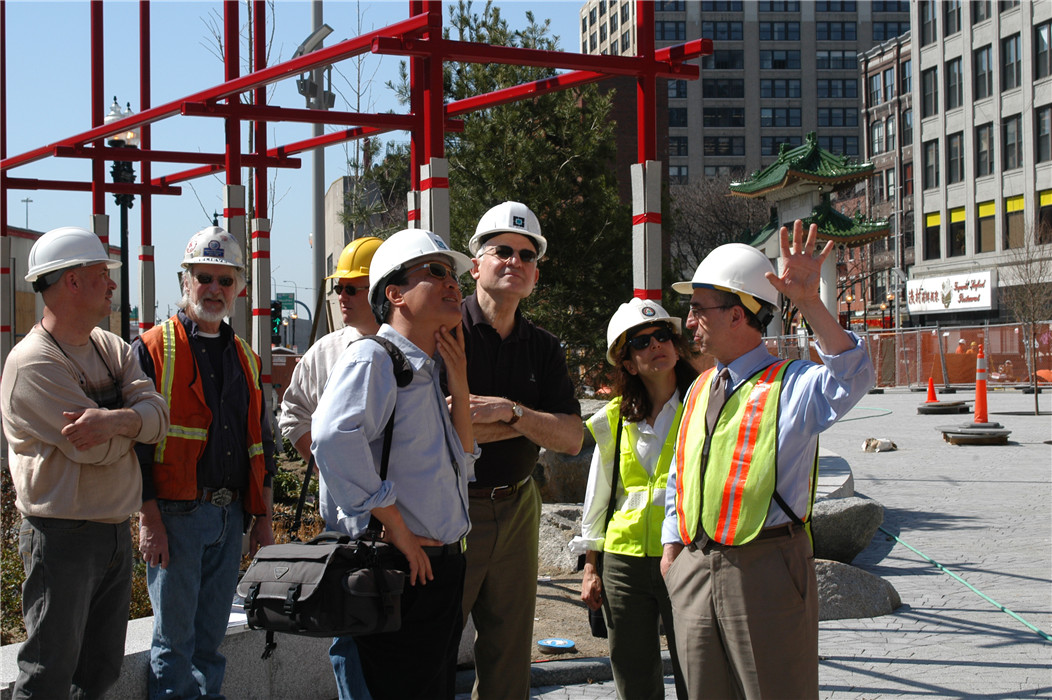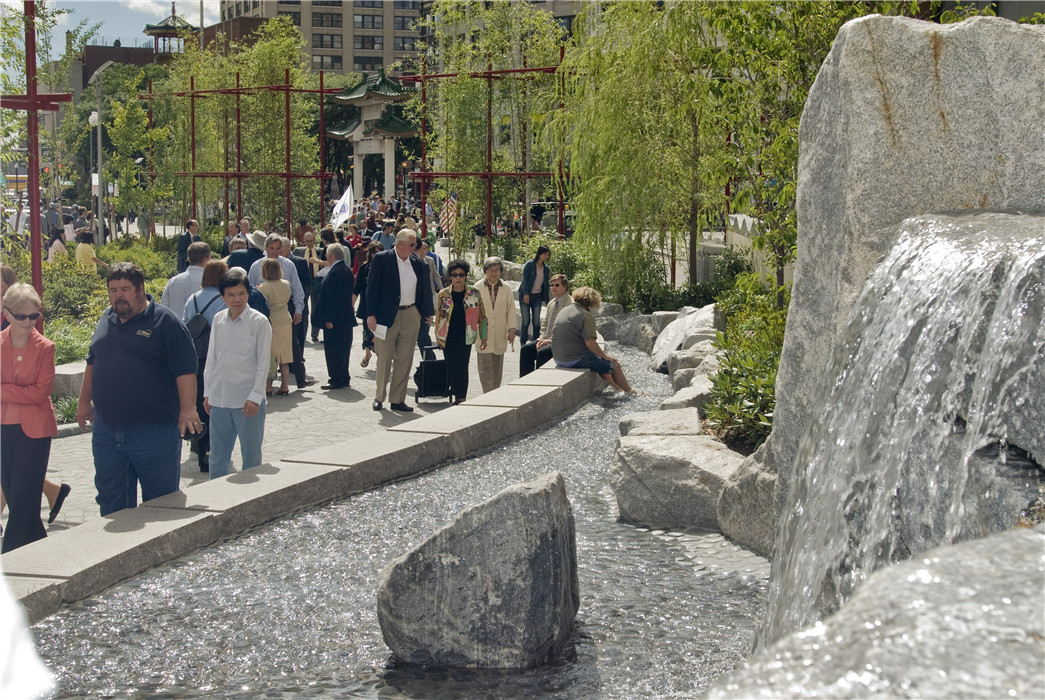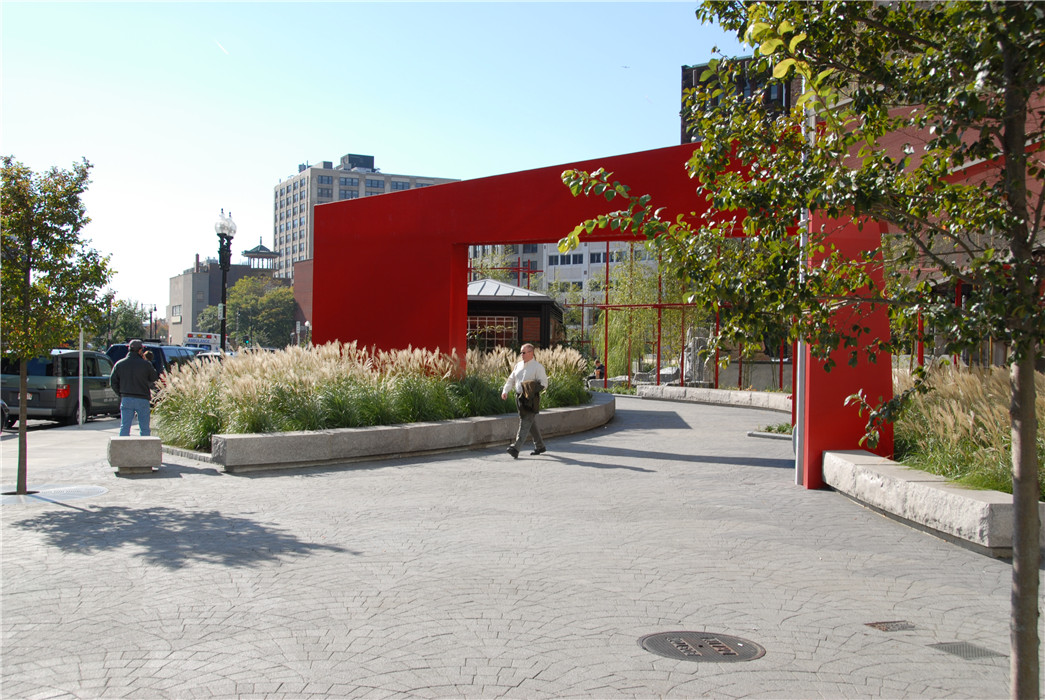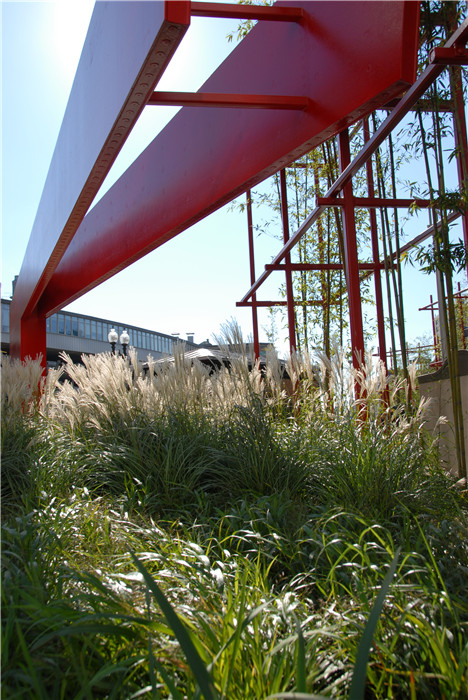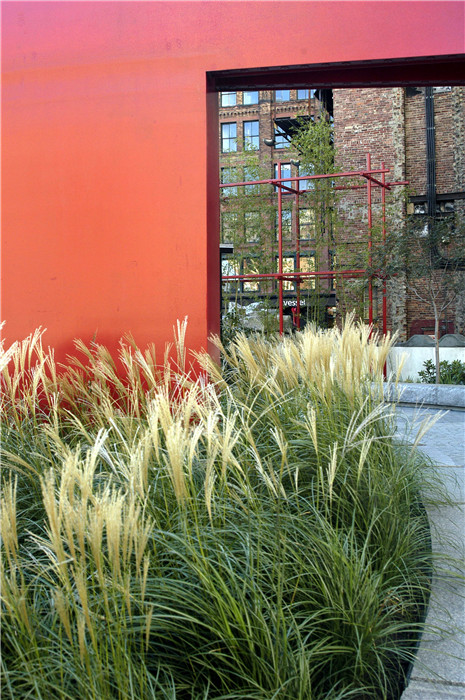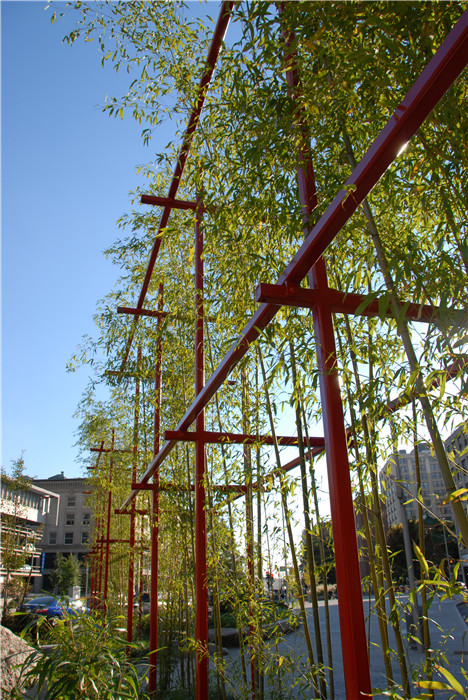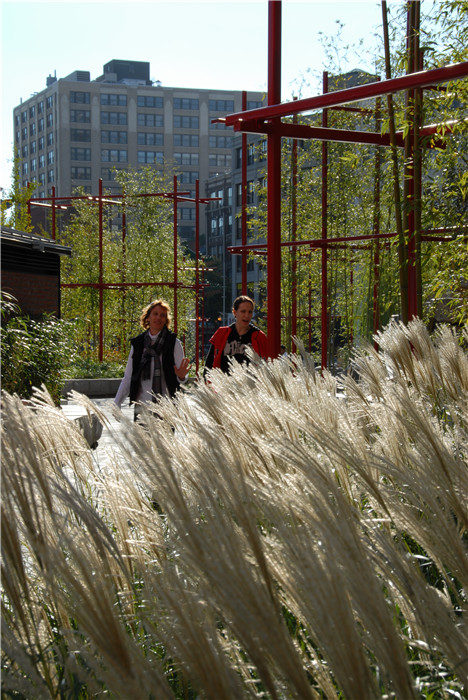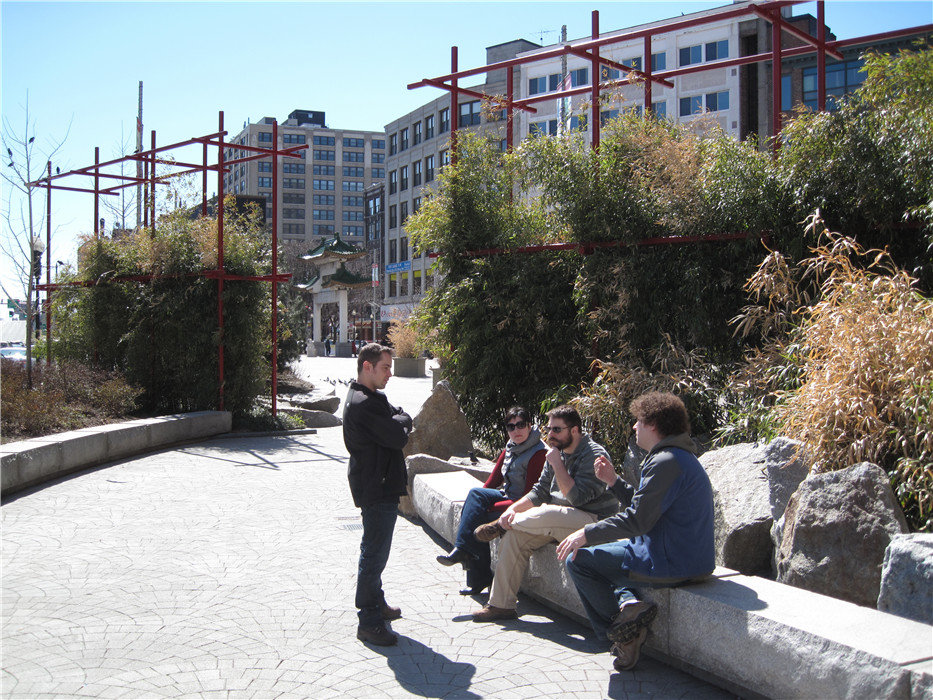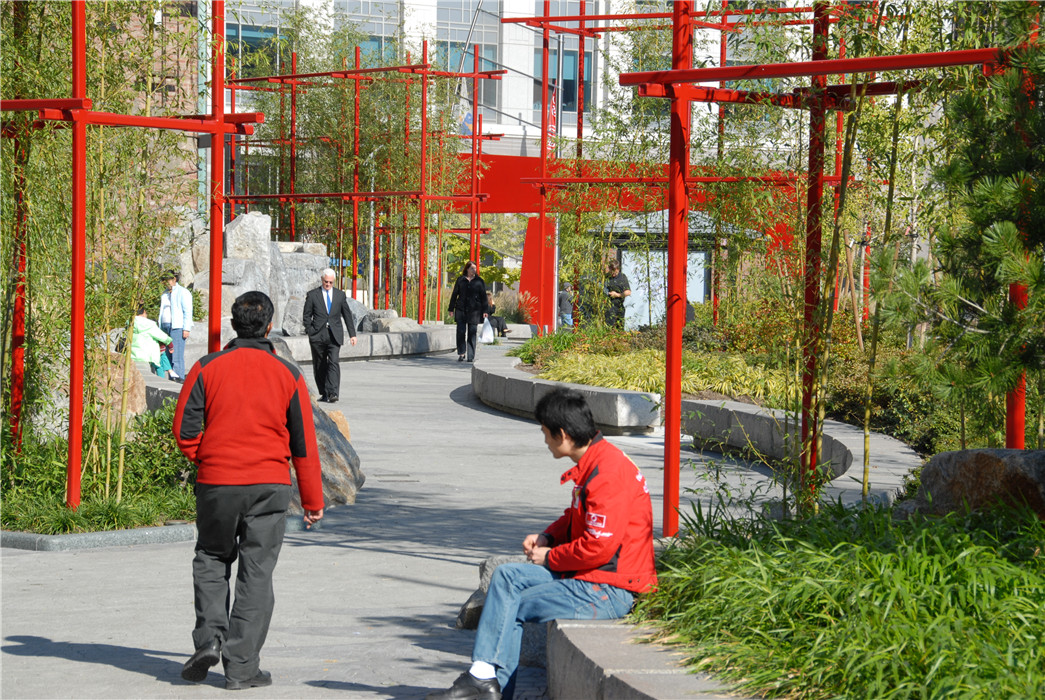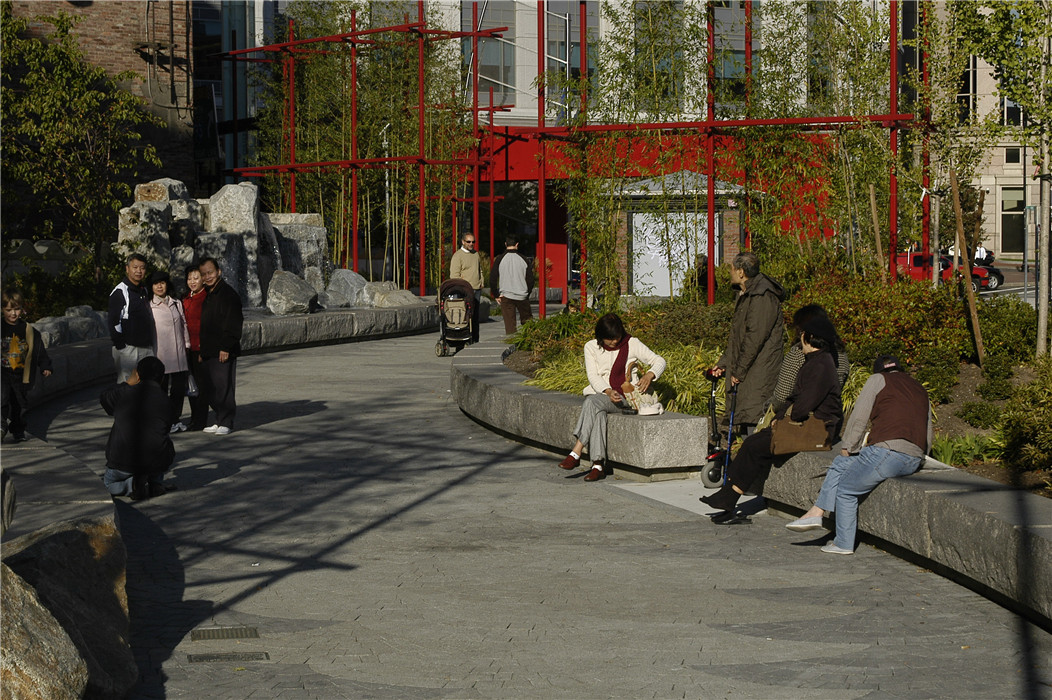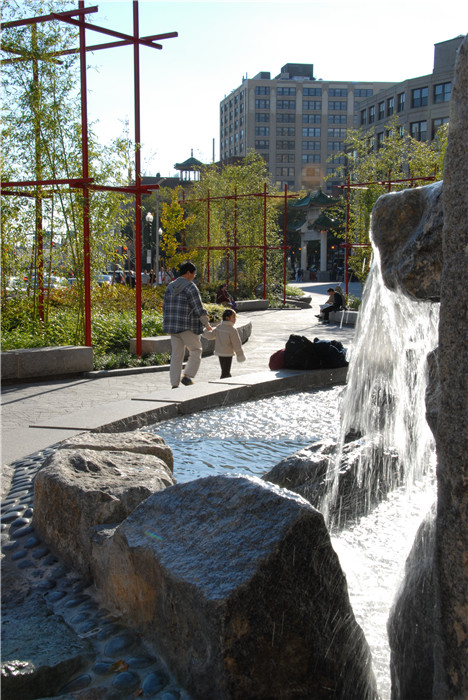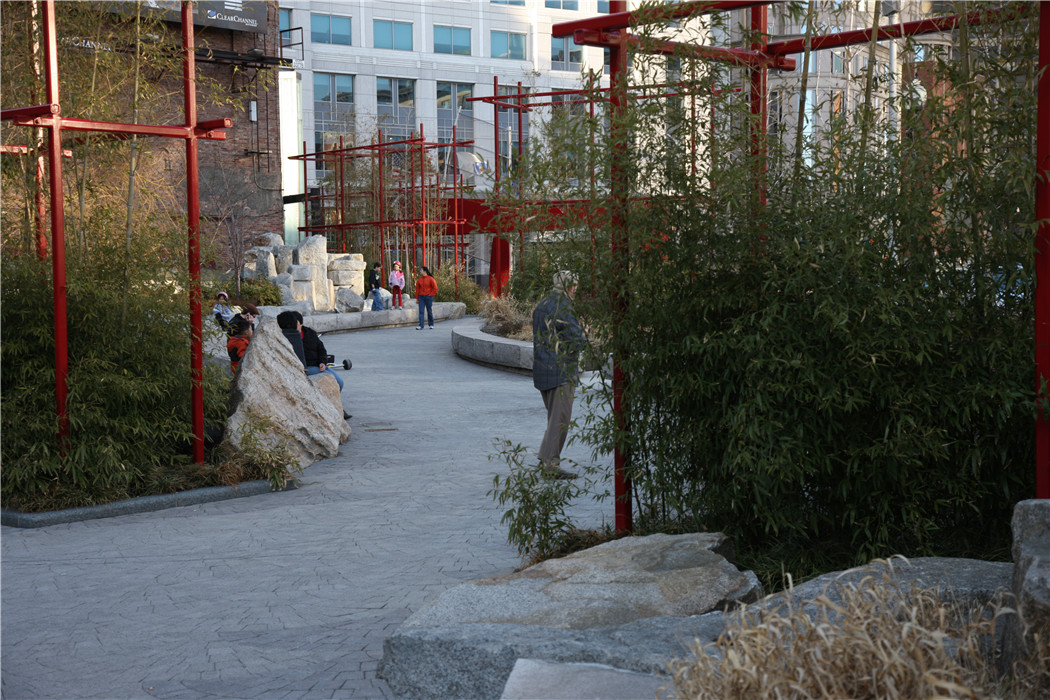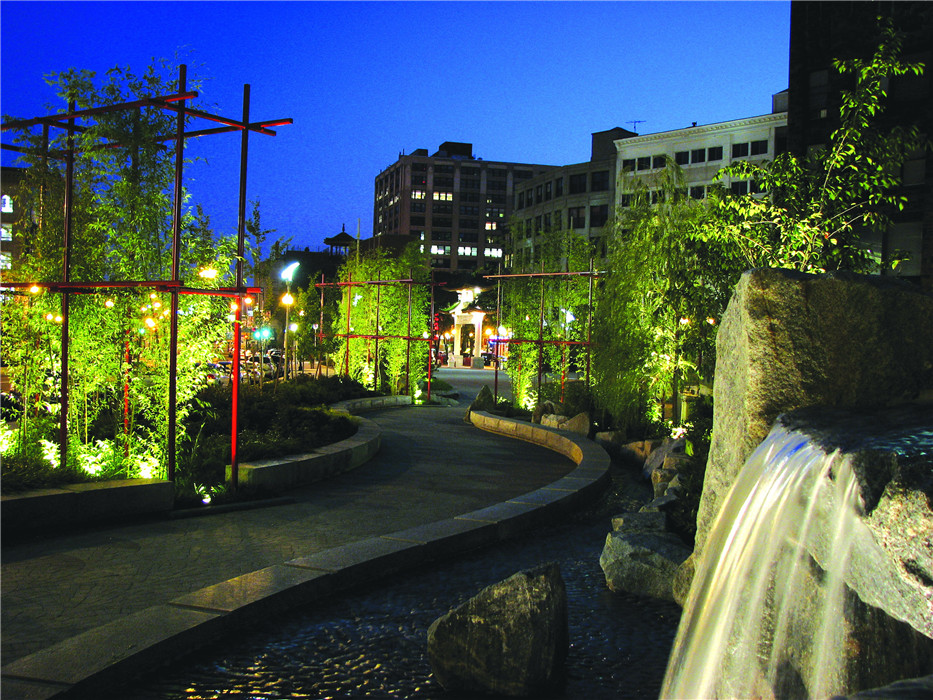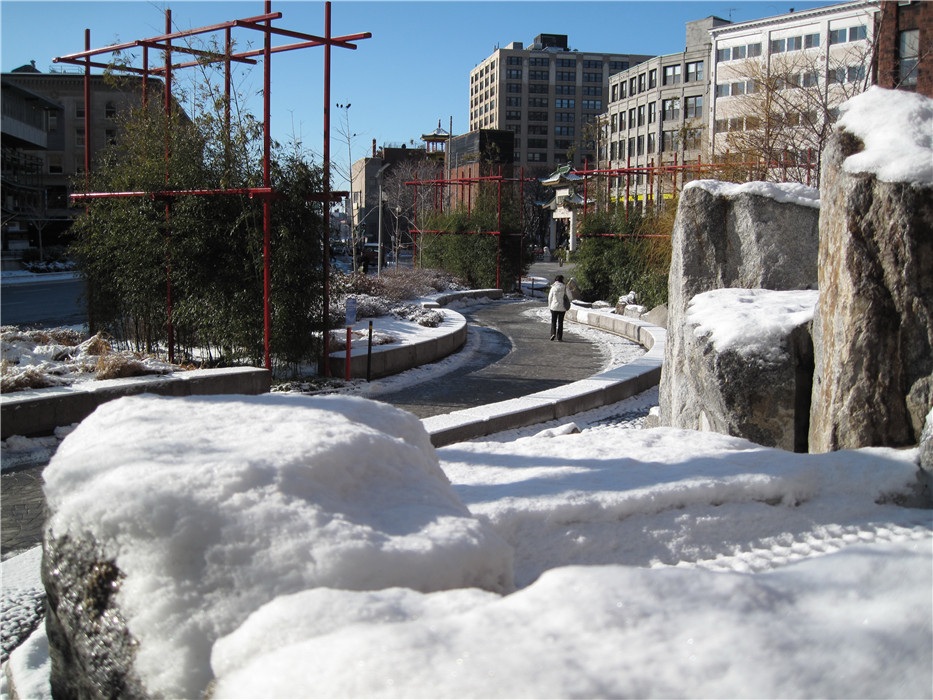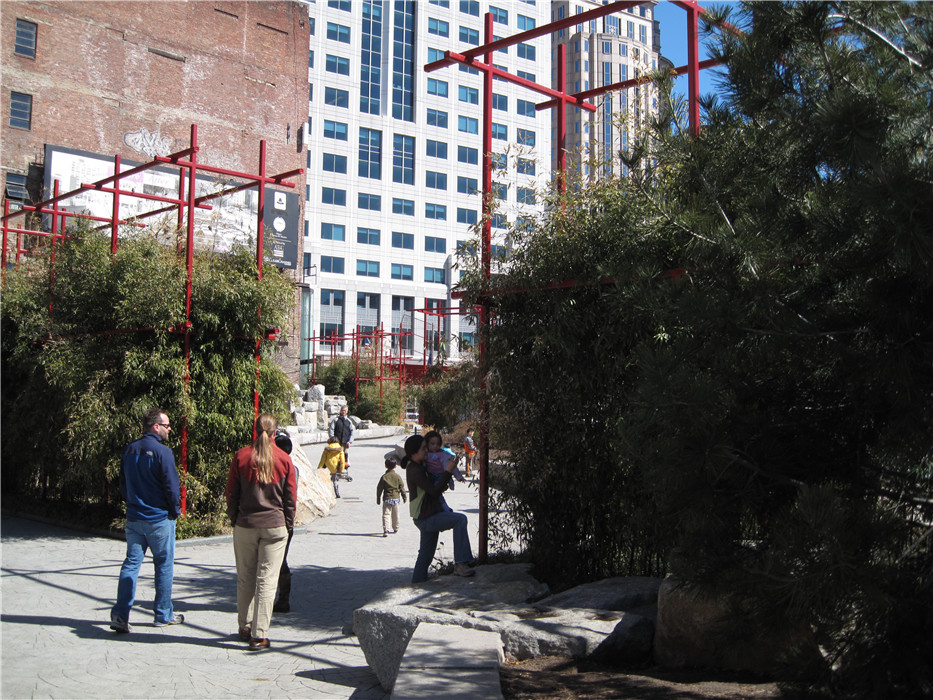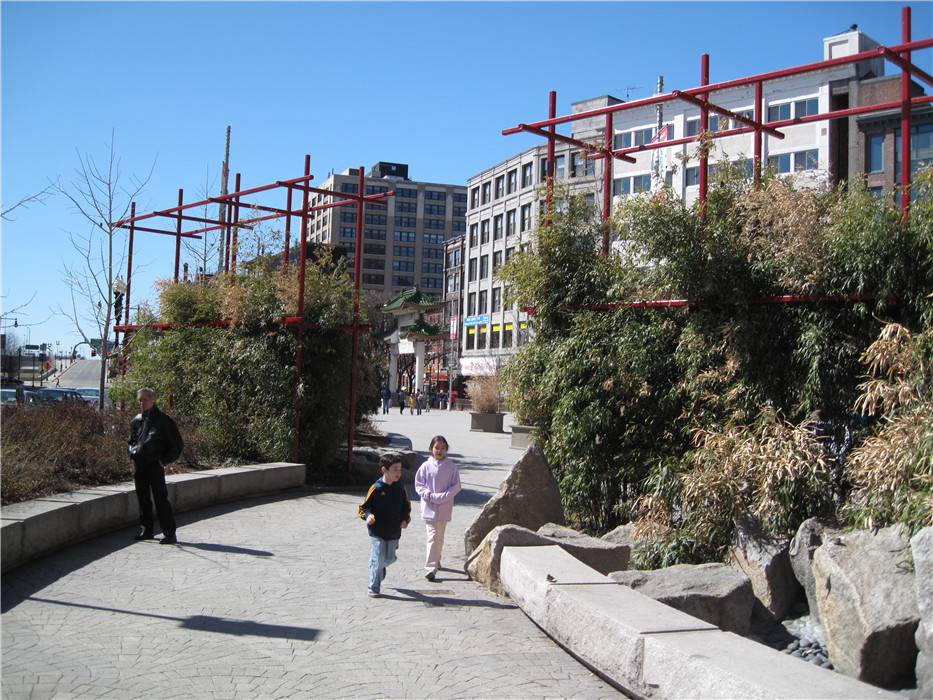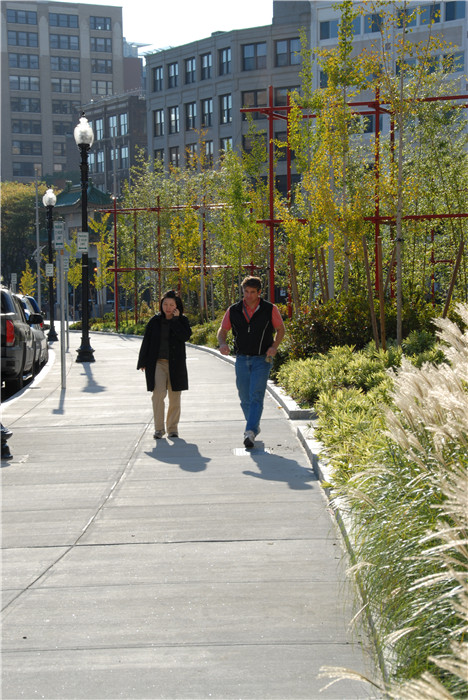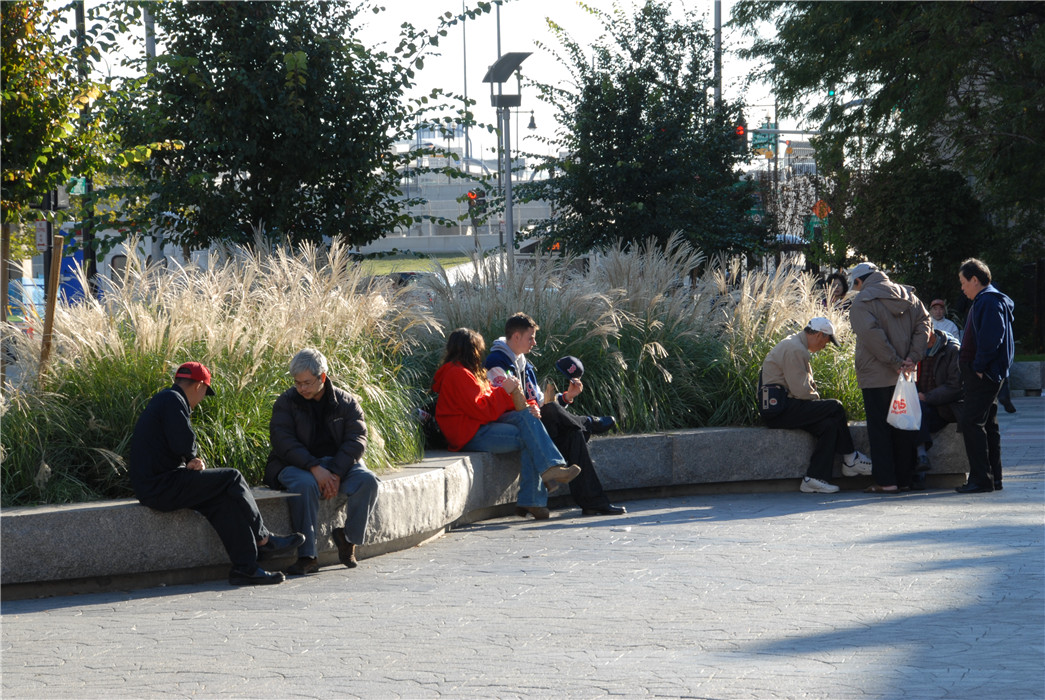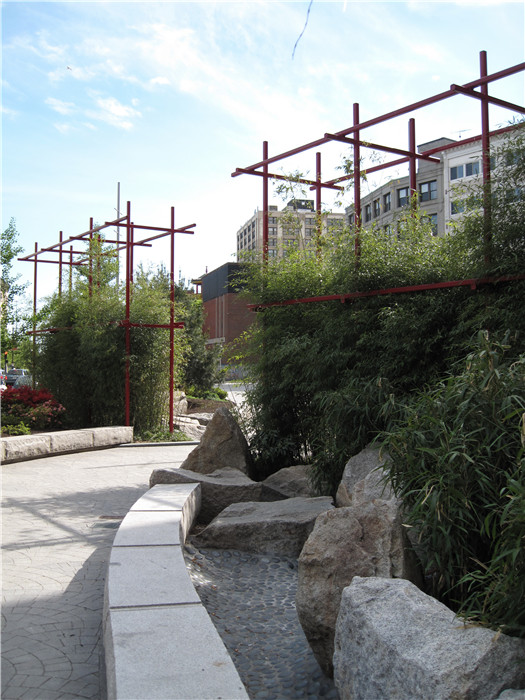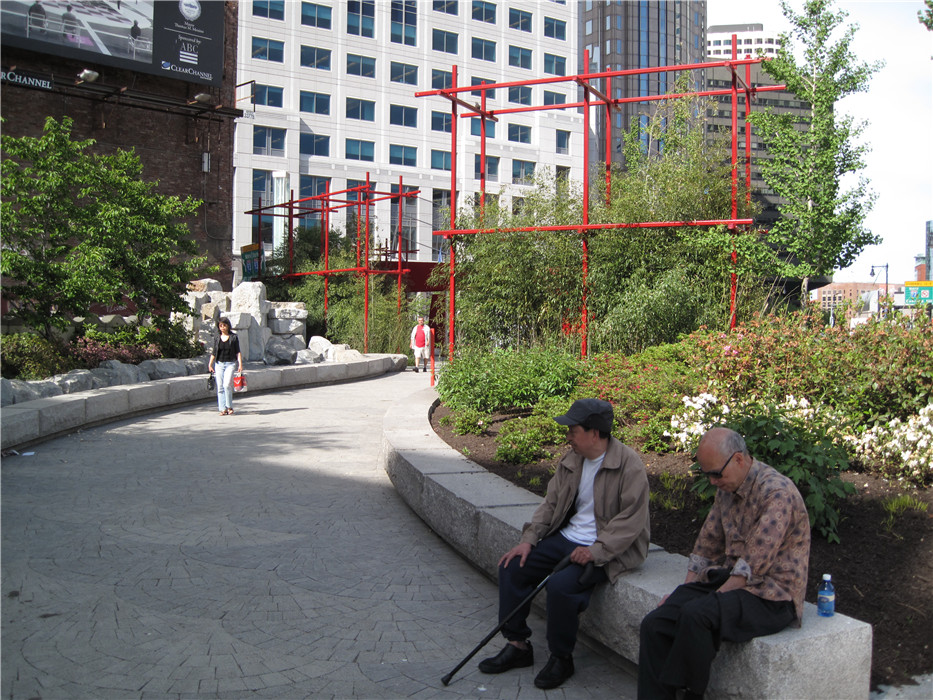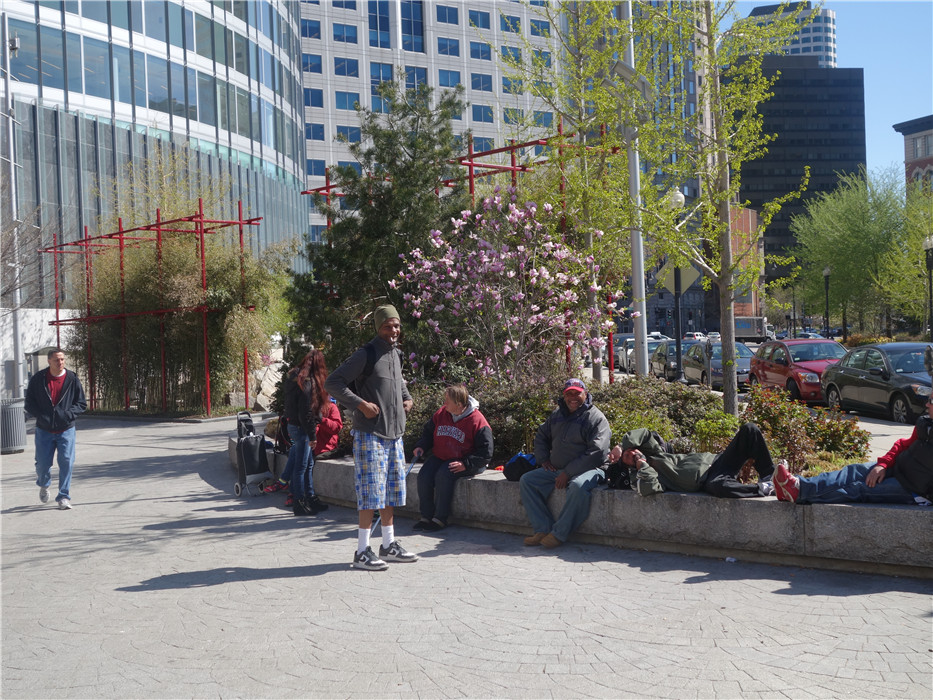Boston Chinatown Park
Project Information
- Project Location:
- USA Boston
- Project Scale:
- 0.41 Hectares
- Design Time:
- January 2003
- Build Time:
- 2005
- Client:
- Massachusetts Turnpike Authority, Boston, USA
- Related Papers
Project Profile
1. Project Statement
Boston, Massachusetts, is world-renowned for its traffic problems. To address this, the Massachusetts Turnpike Authority designed a large and expensive solution known as the Central Artery/Tunnel Project, commonly referred to as the "Big Dig." The Big Dig created over 121 hectares of landscape and open space, including approximately forty-five parks and major public squares. The Chinatown Project is one of these parks.
2. Design Strategy
Turenscape, in collaboration with Boston-based Carol R. Johnson Associates, proposed transforming Chinatown Park into a public activity center and performance venue. The inspiration for this idea came from the traditional village squares in Chinese villages, the stories of Chinese immigrants' journeys to Boston, and the local community's needs for this small urban area. Five bamboo screens frame an entrance that symbolizes the gateway of a traditional Chinese village, with each bamboo screen outlined by red scaffolding. The bamboo screens also create a sense of depth, enlarging the space. A cascading waterfall and a flowing stream create a tranquil atmosphere, reducing the ambient temperature in summer. Additionally, the water flow symbolizes streams found in Chinese villages, the plants are native to China, and the use of Chinese red further emphasizes the cultural characteristics of the site.
At the other end of the bamboo screens, the space opens up into an open area that serves as an urban "exhibition area" catering to various needs and changing accordingly. This space is suitable for festive events such as New Year and Lantern Festival dragon dances, as well as for daily, weekly, and seasonal community activities. Chinatown Park transformed the area from a desolate and dangerous space into a lively gathering place for locals.
3. Conclusion
In Western countries, the typical "Chinatown" iconography is often understood as having pagodas and pavilions with glazed tiles. This new Chinatown Park avoids these clichés, presenting Chinese culture in a modern design language that simultaneously showcases the essence of traditional thought. As Alex Krieger, a professor of urban design at Harvard University, noted, "This small urban oasis is a modern interpretation of the traditional Chinese garden, allowing people to experience a touch of serene beauty amidst the vastness and bustle of the city" .
The extensive praise from local media and the positive reactions from residents prove that the new Chinatown Park has fundamentally changed the perception of the area outside Chinatown as dirty, chaotic, and unsafe. It has become a landscape rich in Chinese and Asian cultural characteristics, while also embracing contemporary features. The park has strengthened the community's sense of belonging and identity, becoming a new landmark in Boston recommended by local tourism departments. The design of the park explores new, contemporary landscape language to express "Chinatown," bringing the concept of "China" into the new world of today.
References
Alex Krieger, “Boston’s Big Dig,” Topos 73 (2010), pp. 68–75.
